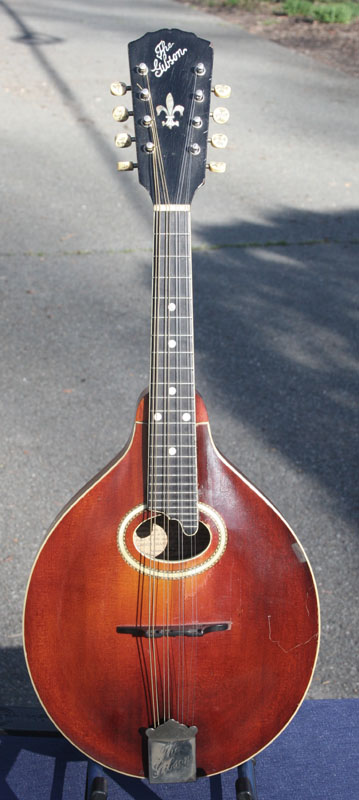

Pickups: Gibson pickups use a silver-colored backplate. Fakes have a female hex nut that takes an allen wrench.ĩ. All Gibsons use a traditional style truss rod with a 5/16” nut. Truss rod: For now at least, this is the surest way to tell a fake from the real thing. The following indicators require you to remove covers see inside.Ĩ.
GIBSON MANDOLIN SERIAL NUMBERS SERIAL NUMBERS
Serial numbers: Gibson serial numbers are stamped on the back of the headstock, and appear dark. I’ve seen some fakes with dull or pebbled covers.ħ. The control covers on the back of Gibsons are shiny plastic. Fakes often use lighter, more yellow colored. Binding and plastics: Most recent Gibson binding is darker with more of a pinkish hue. If a Custom has a rosewood fingerboard, it’s probably fake.Ħ. The exception is the Les Paul Custom and Supreme models, which use an ebony board. Fingerboards: In recent years, Gibson has offered some different fingerboard woods, but Indian Rosewood has been a mainstay for most models over the years. Solid wood tops usually have a nice, well-defined seam.ĥ. On veneered tops the center line between the bookmatched sides often appears fuzzy. On models with transparent finishes, you can see the maple as a lighter contrasting strip of wood just below the binding in the cutout, next to the neck. The cap is 5/8”-3/4” at its thickest point in the center, tapering to about ¼” at the edges. Maple top: Not all Les Pauls have a mahogany body with a maple top, but those that do utilize a thick solid carved cap, not a veneer. Gibson has never used scarf joint neck construction.Ĥ. Neck construction: With few exceptions, Les Paul necks are one piece with “wings” on each side of the headstock. Also, guitars that have been re-fretted often do not have nibs.ģ. This used to be a dead giveaway, but I have seen fakes now with nibs, so it is no longer a sure sign. The frets do not extend over the binding, rather they are cut off inside the bound portion, and the binding is cut around the ends of the fret. Fret binding nibs: With the exception of 2014, all Gibsons with bound fingerboards have fret nibs. Real Gibson bridges have a very small post, and adjustment is made using only the thumbwheels.Ģ. Most fakes have the imported style bridge, which has a ¼” screw post that can be adjusted using a flat screwdriver. The bridge: This is probably the easiest difference to spot. OK, now let’s get to specific features that differentiate fakes from real.ġ. I’ve seen more fake Les Paul Supremes than the real deal. Counterfeiters seem to favor more obscure models, like signature models, “Custom Shop” models, unusual colors, etc. But if you meet the seller in a parking lot, and he pulls the guitar out of the car without a case, walk away.ģ. That’s not to say that having a Gibson case assures you that it is real. Less expensive models often come with a Gibson-branded gig bag. All higher-end Gibsons come with a Gibson hard case. If it doesn’t come with a Gibson case, beware. If someone is selling a Les Paul Standard or Slash Signature model for $500, beware.Ģ.

If the deal seems too good to be true, it probably is. Following are some red flags to help you spot a fake.ġ. In the early days of fake Gibsons (often referred to as Chibsons), the tell-tail feature was that the fakes had a three-screw truss-rod cover, and real Gibsons used two-screw, but the counterfeiters caught on to that long ago. Also, Fenders have so many models, trim levels, countries of origin, etc, that it is hard for even an expert to keep up, so for now I’ll focus on Gibsons, in particular, Les Pauls. Fenders are essentially component guitars, and those components can easily be made and assembled. Gibsons aren’t the only guitars being counterfeited, but they are common, and easier to spot than Fenders. Most people who buy from these merchants know what they are getting, and don’t intend to fool anyone by re-selling as the genuine article, but there are those who do, and that is where the buyer needs to be aware. Also, internet merchants make it very easy to obtain counterfeits, and even offer custom builds.

Counterfeit guitars from Asia (primarily China) have been around for at least a couple of decades, but today’s offerings are getting harder to spot.


 0 kommentar(er)
0 kommentar(er)
